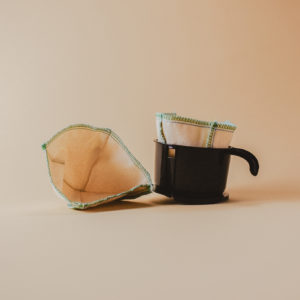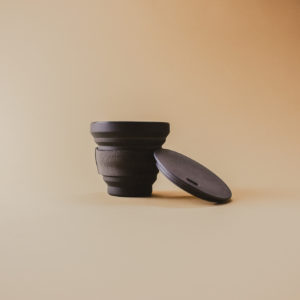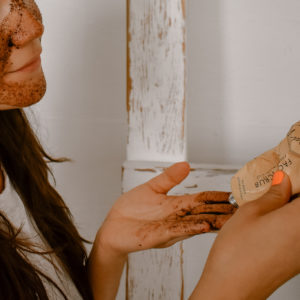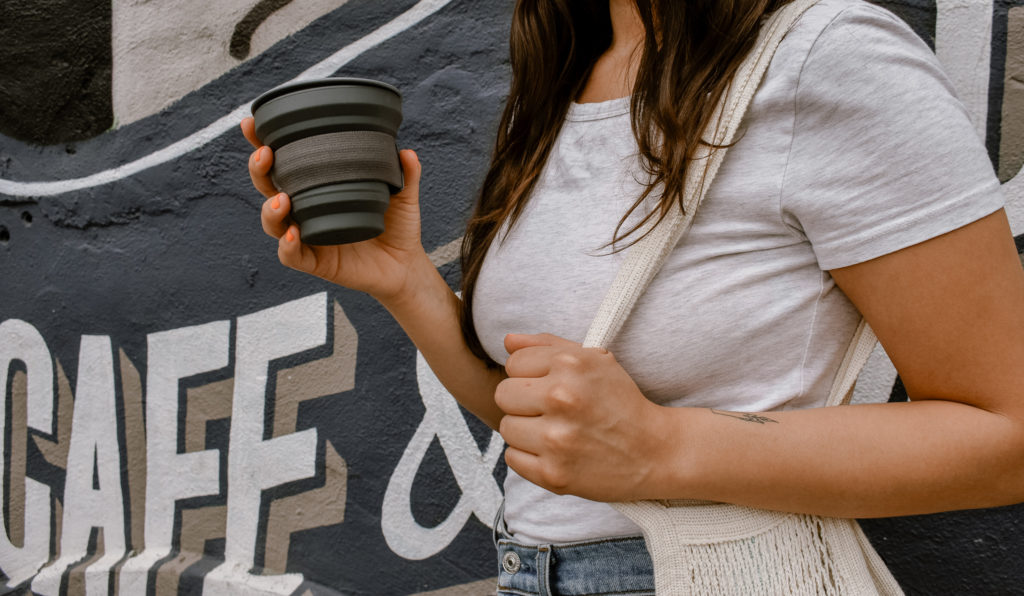More than half of Americans (68 percent) drink two or more cups of coffee each day, which results in hundreds of millions of drips, presses, percolators and pots being brewed across the USA.
There are many ways to make a cup of coffee, but probably the most common in America is drip coffee, with the iconic glass pots being ubiquitous in diners, restaurants, cafés and homes across the country. However, if you’re looking to enjoy a zero-waste coffee, you’ll have to change how you brew. While unbleached paper filters are compostable, the majority will likely still end up in a landfill. According to the U.S. Environmental Protection Agency, the food composting rate was just 4.1 percent in 2018, so the chance of a coffee filter making its way to mulch is very low.
Worse still are single-serve coffee containers, which have gained popularity in recent years. These coffee pods or capsules are most commonly made from either plastic, aluminum or a mix of the two and are probably the furthest you could get from a zero-waste coffee. They are single-dose, which means one plastic pot is used per cup, and according to 2020 estimates, the US throws out 64.6 million of these coffee pods every single day.
As with any single-use product, these coffee pods add to the global waste crisis. While capsules made entirely from aluminum are recyclable in theory, the total recycling rate of all aluminum containers and packaging in 2018 was just 34.9 percent, meaning they’re far more likely to end up in a landfill than being made into another product. When it comes to plastic capsules, the outlook is even worse, with a recent report finding that last year, only 5 percent of the plastic waste generated by the US was recycled. Furthermore, any capsules that use mixed materials are almost certainly destined for the landfill due to the general difficulties in processing these products.
However, that doesn’t mean that java is off the menu, there are plenty of ways to make a coffee zero waste and we’re going to look at some of the best options below.
How To Make Zero-Waste Coffee
There are loads of options to brew a zero-waste coffee, and the one you choose will largely come down to taste. Some are simpler than others, but whichever you choose it’s going to be lightyears ahead of the single-use plastic pots that are currently so common.
Zero-Waste Coffee Filter 
One of the simplest ways to start making your brew more sustainable is with a zero-waste reusable coffee filter. These are almost identical to their paper counterparts but are made of reusable materials such as cotton. These reusable filters can be used in exactly the same way as a paper one on top of a pot or mug, but when you’re done brewing, you scoop out the coffee grounds and clean it rather than tossing it in the trash.
Another popular alternative to paper filters is zero-waste ceramic coffee filters from Japan. These rely on a porous ceramic that sits atop your pot like a normal paper filter. However, when used, there is nothing to throw away! You simply clean the filters and they’re ready to use again. That said, they can be challenging to clean, so keep this in mind when making a decision.
You can also get stainless steel zero-waste coffee filters, which look almost identical to your standard paper filter holder but have a fine mesh to act as the actual sieve for particles. These, like zero-waste ceramic coffee filters, are washed and ready to use again.
Zero-Waste Coffee Sock
Technically this is a reusable coffee filter but they are used slightly differently so deserve a little more consideration. Common in much of east Asia, as well as Mexico and Costa Rica, this zero-waste pour-over coffee filter consists of a cotton “sock,” in which the ground beans are placed, and a stand. Water is then poured into the sock and the coffee filters out into a pot underneath.
Zero-Waste Coffee Pods
If you want to be zero waste, but are hesitant to kick the coffee pods because you’ve already invested in a machine, there are some reusable options. Depending on the make of your coffee machine, there are third-party providers out there who have started manufacturing refillable metal pods. You can fill these with a ground of your choice and pop them in your machine as you would with a disposable capsule.
Don’t Forget the Classics
Many of the classic coffee-making techniques can already be less wasteful than pods. A French press, for example, doesn’t require any disposable filter, nor does a percolator. Both instead rely on metal strainers to remove the grounds. Of course, these different methods also produce a different style of coffee, which is a major part of the consideration when looking for a zero-waste coffee alternative.
Finally, it’s worth noting that however you make your coffee, use a reusable cup! Coffee tastes better from a mug anyway, so forgo the disposable cups that clog up landfills and pollute the environment.
What Comes Next? Zero-Waste Coffee Ground Disposal 
Whichever zero-waste coffee maker you choose, you’re still going to be left with coffee grounds, but don’t worry, these don’t have to end up in the garbage. First, they are plant matter, so can be easily composted at home or using a commercial service. What’s more, if you have your own garden, coffee grounds can actually be added directly to the soil as a raw fertilizer – just do so in moderation.
If you don’t have access to compost or a garden, there are plenty of other ways to reuse coffee grounds. For example, some people include it in cleaning products to act as a natural abrasive, whether for pots and pans or exfoliating skin. Coffee grounds can also be used as a growing medium for mushrooms, allowing you to turn your coffee waste into a nutritious meal, for example.
These zero-waste coffee ground ideas are just the tip of the iceberg, and once you start experimenting and exploring, you’ll soon realize there’s no reason for them to end up in the trash. Combined with your zero-waste coffee filter, you’ll be well on your way to a more sustainable morning routine.
For more information about how to live a zero waste life, including more top tips about zero waste products and swaps, check out our blog or visit our shop.

